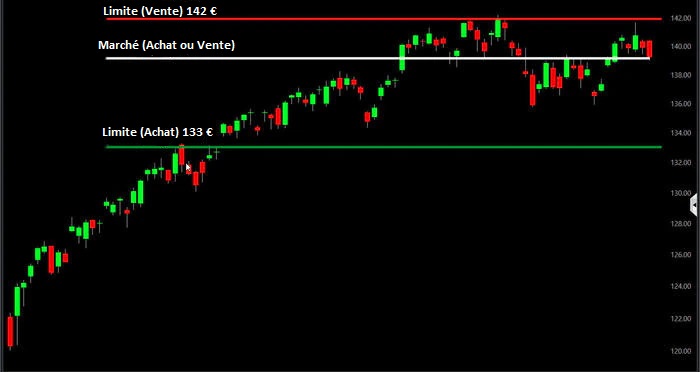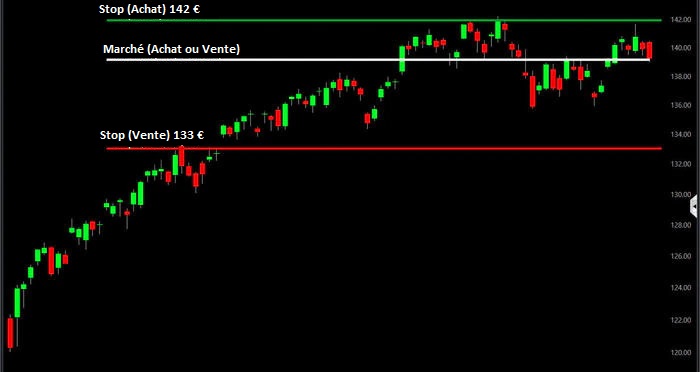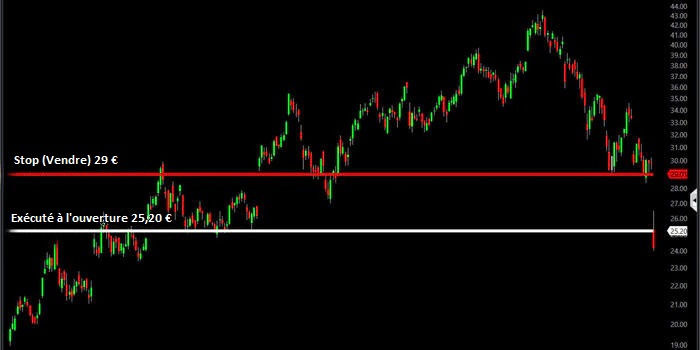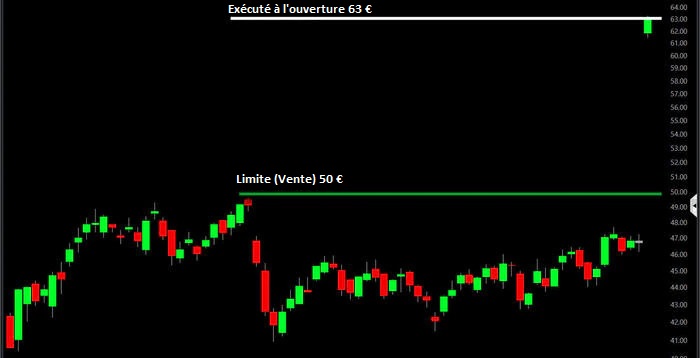3 types of orders: market, limit, and stop orders
Different types of commands can lead to very different results; It is important to understand the differences between them. Here we focus on three main types of orders: market orders, limit orders, and stop orders – how they differ and when to consider them.
It is helpful to think of each request type as a separate tool that fits its own purpose. Whether you are buying or selling, it is important to define your main objective, whether it is to quickly execute your order in the market or to control the price of your trade. You can then select the most appropriate order type to achieve your goal.
What is a market order and how do I use it?
A market order is an order to buy or sell stock At the best price available in the market. A market order generally guarantees execution, but does not guarantee a specific price.
Market orders are ideal when the main objective is to execute the trade immediately. A market order is generally appropriate when you believe the share price is correct, when you are certain you want the order to be executed, or when you want immediate execution.
Some caveats: The stock price usually includes the highest bid (for sellers), the lowest bid (for buyers), and the last trade price. However, the last price that was traded is not necessarily the current price, especially in the case of less liquid stocks, which may have been traded minutes or hours ago.
This can also be the case in fast-moving markets, where stock prices can change dramatically in a short time. Therefore, when placing a market order, the current bid and ask prices are usually more important than the last trading price.
In general, market orders should only be placed during market hours. A market order placed at markets close will be executed at the next market open, which may be much higher or lower than the previous close.
Between trading sessions, many factors can affect a stock’s price, such as an earnings release, company news, economic data, or unexpected events affecting an industry, sector, or the market as a whole.
What is the limit command and how does it work?
A limit order is an order to buy or sell a stock with a restriction on the maximum price that must be paid or the minimum price that must be obtained (“limit price”). If the order is executed, it will only be at the specified limit price or better.
However, there is no guarantee of performance. A limit order may be appropriate when you think you can buy lower – or sell higher – than the current price.
The above chart shows the use of market orders versus limit orders. In this example, the last price that was traded was around 139 EUR.
- A trader who wants to buy (or sell) the stock as quickly as possible will put in a value Ask at the market pricewhich in most cases will be executed immediately at or near the current share price of €139 (white line), provided the market was open when the order was placed and barring unusual market conditions.
- A trader who wants to buy the stock when it drops to 133 EUR will put A Limited purchase order At a limit price of 133 euros (green line). If the stock falls to 133€ or less, the limit order will be triggered and the order will be executed at 133€ or less. If the stock does not fall to 133 euros or less, nothing will be executed.
- A trader who wants to sell the stock when it reaches 142 EUR will place A Sell limit order At a limit price of 142 euros (red line). If the stock rises to 142€ or more, the limit order will be triggered and the order will be executed at 142€ or more. If the action does not reach 142 euros or more, the execution will not take place.
Note that even if the stock reaches the specified price, your order may not be filled, as there may be orders prior to your order that eliminate stock availability at the specified price. (Limit orders are generally executed on a first-come, first-served basis).
Notez également qu’avec un order à cours limité, the prix auquel l’ordre is exécuté peut être inferieur au prix limite, in the cas d’un ordre d’achat, ou superior au prix limite, dans the cas d’un ordre sales.
If an order to buy up to €133 is defined as “valid until cancelled”, rather than “valid on the same day”, it will remain valid on the next trading day.
If the stock opens at €130, then a buy limit order will be triggered and the buy price should be around €130 – a more favorable price for the buyer.
Conversely, with a sell limit order at €142, if the stock opened at €145, the limit order would be triggered and executed at a price close to €145 – again, a more favorable price for the seller.
What is a stop loss order and how is it used?
A stop order is an order to buy or sell a stock at the market price once the stock reaches or exceeds the specified price (“stop price”).
If the stock reaches the stop price, the order becomes a market order and is executed at the next available price. If the action does not reach the stop price, the order will not be executed.
A stop order may be appropriate in these scenarios:
- When a stock you own is going up and you want to try to protect your gains if it starts to go down.
- When you want to buy a stock when it crosses a certain level, thinking that it will continue to rise.
A sell stop order is sometimes referred to as a “stop loss” order because it can be used to help protect unrealized gains or seek to minimize a loss.
A Sell Stop order is entered at a stop price lower than the current market price; If the security falls to the stop price (or trades below), the sell stop order is triggered and becomes a market order to be executed at the current market price. This stop loss order cannot be guaranteed to be executed near the stop price.
A stop order can also be used to buy. A buy stop order is entered at a stop price higher than the current market price (in essence, it “stops” the stock from sliding away from you while it is rising).
Let’s go back to our previous example, but consider the potential effects of using a buy stop order and a sell stop order – with the same stop prices as the limit prices used earlier.
Although the two charts may look the same, note that the positions of the red and green arrows are reversed: a sell stop order will be triggered when the stock price reaches €133 (or less), and will be executed as being in the market at the current price.
Thus, if the stock continues to fall after the stop price is reached, there is a possibility that the order will be executed at a price lower than the stop price. Conversely, for a buy order, once the stop price of €142 is reached, the order can be executed at a higher price.
What are the spreads?
A price gap occurs when the price of a stock goes up or down sharply without any trades taking place in between.
It may be due to factors such as an earnings announcement, a change in analyst outlook, or a press release. Spreads frequently occur at the opening of the major exchanges, when news or events outside of trading hours create an imbalance between supply and demand.
Stop orders and price gaps
Remember, the main difference between a limit order and a stop order is that the limit order will only be executed at or better than the specified limit price; Whereas, once a stop order is triggered at the specified price, it will be executed at the prevailing market price – meaning it can be executed at a price that is significantly different from the stop price.
The following chart shows a stock ranging from €29 to €25.20 between the previous close and the next open. A sell order with a stop price of €29 – which would have been triggered at the market open because the share price fell below the stop price and, as a market order, would have been executed at €25, 20 – could be much lower than the expected price, and worse for the seller.
Stop order: Downward deviations can lead to an unexpected drop in prices.
Limit orders and gaps
Just as the “gap down” can work against you with a sell stop order, the “gap up” can work for you with a sell limit order, as shown in the chart below. In this example, the sell order is placed at a limit price of 50 euros.
The previous closing price of the stock was 47 euros. If the stock opens at €63 due to positive news from the previous market close, the trade will be executed on the open market at that price – higher than expected, and better for the seller.
Limited request: A gap up can lead to an unexpectedly higher price.
Conclusion
Many factors can affect trade execution. In addition to using different order types, traders can set other conditions that affect order execution time, size, or price restrictions.
Before you place your trade, learn about the different ways to control your order; This way, you will have a much better chance of getting the result you are looking for.





